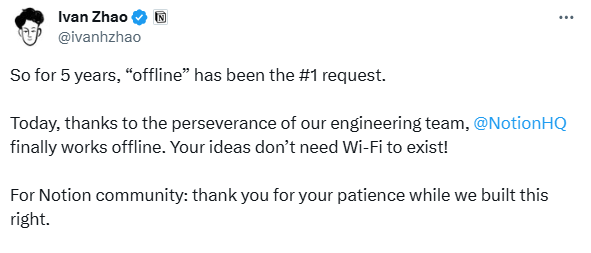Starting a print-on-demand (POD) business can be an exciting way to turn your creative ideas into profit. But many new business owners make mistakes that can hurt their chances of success. Whether you’re starting a new business or have been running your POD store for a while, mistakes are bound to happen. The good news is that they don’t have to cost a lot.
In this guide, we’ll talk about 17 major POD mistakes you should never make. If you understand these issues early on and use the right strategies, you’ll be able to grow your business over time and avoid many buyer issues.
What is Print on Demand
Print on Demand (POD) is a business idea that helps you to create and sell unique items without keeping inventory. T-shirts, mugs, and posters are only printed once a buyer puts an order. This removes the requirement for an initial investment in inventory or shipment management. POD suppliers handle printing, packing, and shipping straight to customers. It is a low-risk, scalable approach to launch a company, particularly for artists and entrepreneurs. However, avoiding common mistakes in the POD process is essential for establishing a successful company.
17 Critical Print-on-Demand Mistakes and Solution
It can be fun to start a Print-on-Demand (POD) business, but a lot of people do things wrong that can hurt their chances of being successful. You can improve your chances of building a successful POD business by learning about these common mistakes and how to avoid them. These 17 common POD mistakes and how to fix them will help you get around and do well in this business plan.
1. Designing Without a Clear Target Audience
Beginners often make the mistake of creating goods based on their own tastes instead of the wants or needs of the people they want to sell to. Making sales is much harder if your ideas don’t appeal to a certain group of people.
How to Avoid
To avoid this mistake, first make sure you know who your target group is and what they need. First, find out who they are, such as their age, place, and hobbies. Think about what problem your design solves for them and why they would pick your product over others on the market.
By paying attention to these things, you can make patterns that are perfect for your area. This method makes it more likely that you will get more sales, happier customers, and more loyal customers.
2. Picking the Wrong Item
When it comes to POD, not every product is the same. If you choose a product that doesn’t go with your style, customers may not be happy and sales may go down.
How to Avoid
Make sure your goods go with your style. Clothing items like t-shirts and hoodies usually look best with complicated designs. Accessories or mugs, on the other hand, might look better with basic designs.
Think about what your group wants. For instance, if you want to reach athletes, focus on selling things they would use, like gym clothes or water bottles.
It’s important to make sure that the right product goes with your design so that it speaks to your audience and brings in sales.
3. Not researching competitors before designing
It’s a bad idea to skip the study part and make plans without looking at what’s already on the market. If you don’t know who your rivals are, you might come up with ideas that don’t meet market needs or are too close to what others are already making.
How to Avoid
Look into the goods and designs that your competitors in your area have made before you start making your own. Look for design elements and product types that are popular with your target market and follow those trends. You can offer something new if you can find holes in the market.
Reading about your competitors can help you stay on top of trends and make your ideas stand out.
4. Making copies of other people’s designs
Even though it might be tempting to copy a famous design, doing so is not only wrong, but it is also against the law and can have devastating legal effects.
How to Avoid
Make sure that every design you use is either your own original work or that you have permission to use certain pictures or graphics. Focus on making designs that are one-of-a-kind and personal that show what your brand stands for.
5. Not ordering product samples
We understand how excited you are to open your store, but depending only on product mockups could be a big mistake. Before you sell the product, you need to check it out in person to make sure it meets high standards.
How to Avoid
Get examples of everything you want to sell. This lets you see for yourself how well the product is made, how your designs look on the real thing, and take pictures of the product for your shop.
You can be sure that the goods you’re selling meet your customers’ needs by getting samples.
6. Not setting the right prices for your goods
Too little or too much of a markup on your goods can hurt your profits, while too much or too little can turn people away. For your business to succeed, you need to find the right price plan.
How to Avoid
Take into account the cost of making the item, the cost of shipping, the cost of the site, and taxes when you set your price. Do study on the market to find a price that is competitive in your area. Don’t price your products too low; instead, set prices that are fair for the quality of your goods and keep up with the competition.
7. Not following the rules for print and embroidery files
If you send in wrong or low-quality files for printing, you might get bad results that hurt the quality of your product and make customers unhappy.
How to Avoid
Carefully follow the instructions in the print and needlework files. Make sure your pictures have a high quality (at least 300 DPI) and that the correct file sizes, types, and color settings are used. By following these rules, you can be sure of getting professional-looking pictures.
8. Choosing an eCommerce platform that doesn’t work with others
Not all e-commerce sites work well with POD services. If you choose the wrong platform, it could make it harder to manage your store and the delivery process than it needs to be.
How to Avoid
Make sure that the e-commerce site you choose works well with well-known print-on-demand (POD) services like Printful, Printify, or Teespring. Think about the platform fees, transaction fees, and how easy it is for new users to get started. Many people choose platforms like Shopify, WooCommerce, and Etsy, but you should pick the one that works best for your business.
9. Ignoring how stores look and how customers feel
Even if your goods are great, a shop plan that doesn’t look professional can turn people away. For people to become buyers, the user experience must be smooth and easy to understand.
How to Avoid
Spend money on making your store look clean and easy to use. Make it easy to find your way around and make sure your store works well on phones. Make the process of checking out quick and easy. A store that looks good and is easy to get around in builds trust and gets people to buy things.
10. Not making shipping and return policies clear
Policies that aren’t clear or are missing can cause confusion and mistrust, which can lead to abandoned carts or bad reviews.
How to Avoid
Your shipping, return, and swap rules should be clear and easy to find. Make sure shipping times, costs, and return rules are all very clear. Customers feel more confident when they can clearly understand what they are buying.
11. Not paying attention to Search Engine Optimization (SEO)
SEO is one of the most important things you can do to get free traffic to your POD store. Potential buyers might not be able to find your store if you don’t do good SEO.
How to Avoid
Use terms that are related to your products in the names, descriptions, and pictures. With customer reviews, you can build trust and move up in the ranks. Updating your website with new, SEO-friendly content will bring you free visitors and make it more visible.
12. Hoping for sales without a plan for marketing
No matter how great your ideas are, they won’t sell if you don’t market your shop. Marketing is important to get people to your site and turn them into buyers.
How to Avoid
Make a complete marketing plan that includes paid ads, email programs, and social media marketing. To get people to buy your goods, use sites like Instagram, Pinterest, and TikTok. It’s important to have a good marketing plan if you want to achieve long-term success.
13. Not making good use of social media
Many POD store owners don’t use social media correctly, even though it’s a great way to build your business and connect with your customers.
How to Avoid
Post interesting material that connects with your community on a regular basis. To build trust and community, use user-generated content (UGC). Answer fans’ questions and comments to keep them interested and turn them into loyal buyers.
14. Using bad pictures of products
If you use low-quality pictures or basic models, you miss the chance to show how valuable and well-made your goods really are.
How to Avoid
Take original, high-quality pictures of your goods. When you can, stage the goods in real-life scenarios that show how they can be used. This connects the product to your business and makes it feel real.
15. Not looking at data on sales and traffic
If you don’t keep track of how well your website is doing, you’re not following a plan. It’s important to look at your traffic and sales data in order to make smart choices and make your store run better.
How to Avoid
Track how visitors behave, the number of “bounces,” and the number of “conversions” with tools like Google Analytics. Look at the data on a regular basis to find trends, make your store better, and improve your marketing.
16. Not changing with the times
The worlds of POD and e-commerce are always changing. Things that are popular now might not be important tomorrow.
How to Avoid
Always know what’s going on in your business, what your customers want, and what the seasons mean. Make changes to your ideas and marketing plans all the time to keep your business new and current.
17. Not Building an Email List
One of the best ways to get customers to buy from you again and again is to build an email list. You’re missing out on a chance to build ties with your customers if you don’t have one.
How to Avoid
As soon as possible, start building your email list by giving deals or special material to people who sign up for your email list. Keep in touch with your customers and get them to buy from you again by using email marketing strategies.
Conclusion
It can be difficult to start a POD business, but if you don’t make these mistakes, you’ll be well on your way to success. Spend some time getting to know your customers, making your store better, and using marketing tools correctly. Remember that every mistake is a chance to learn, so don’t be afraid to try new things and improve how you do things as you get better.
If you follow these steps, you’ll not only avoid the worst POD mistakes, but you’ll also build an online business that will last.












